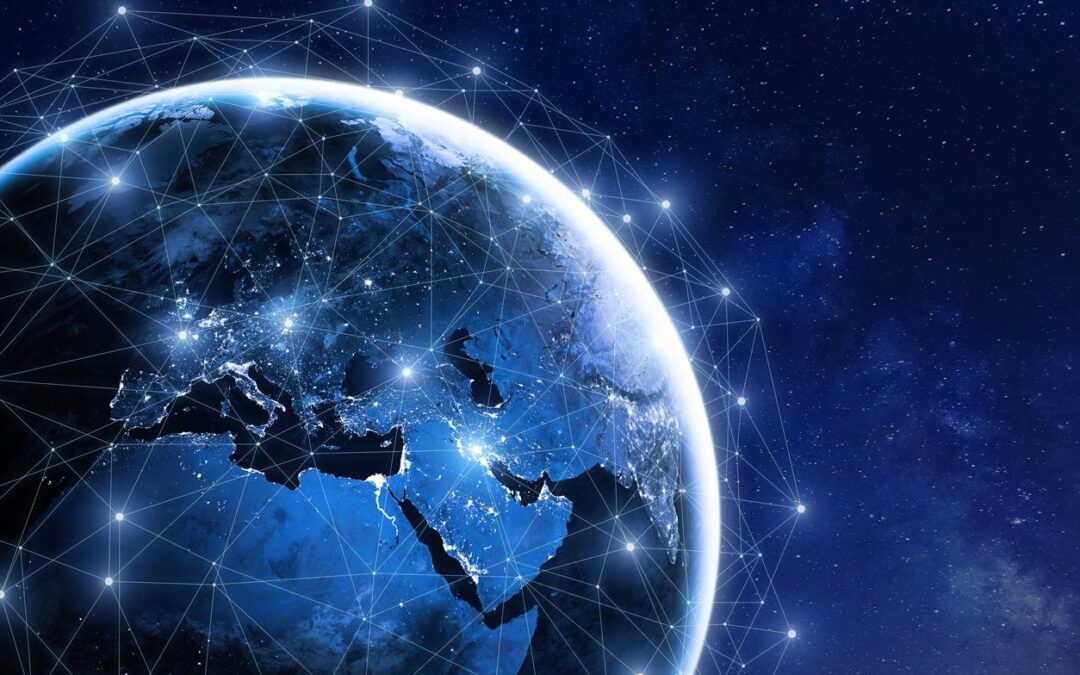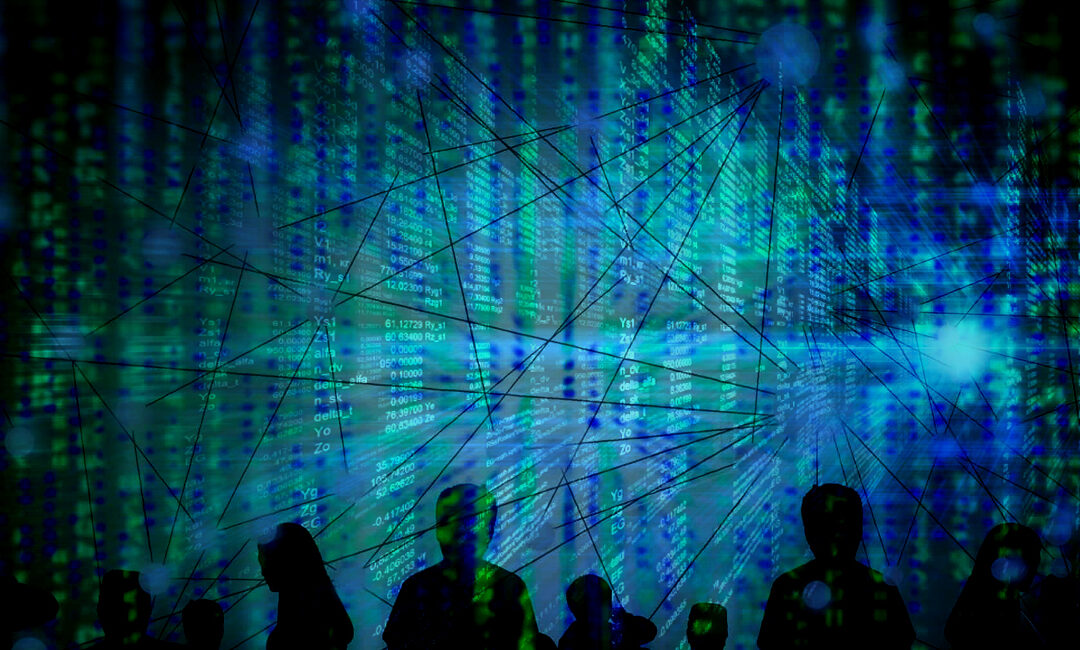
by Nicholas Mitsakos | Book Chapter, Digital Assets, Investment Principles, Technology, Transformative businesses, Writing and Podcasts
Every industry consolidates to a handful of centralized competitors. That will never change regardless of current dreams of decentralization from Web 3.0. Modern computing is a constant struggle between decentralization and centralization. Centralization wins eventually, and it will again. These dynamics, combined with the latest crash that may cool investors’ appetite for all things crypto, suggest that Web 3.0 will not dislodge Web 2.0. Instead, the future may belong to a mix of the two, with Web 3.0 occupying certain niches. Whether or not people keep splurging on NFTs, such tokens make a lot of sense in the metaverse, where they could be used to track ownership of digital objects and move them from one virtual world to another. Web 3.0 may also play a role in the creator economy, assuring intellectual property ownership. NFTs make it easier for creators of online content to make money. In this limited way, at least, even the masters of Web 2.0 see the writing on the wall: on January 20th both Meta and Twitter integrated NFTs into their platforms.

by Nicholas Mitsakos | Artificial Intelligence, Economy, Health Care, Public Policy, Technology, Writing and Podcasts
Observing is not learning. Acting is. But we’re not going to do that. A call for action is sufficient, as long as someone else does it. That much we’ve learned. What used to take several years now takes a fraction of that – including miraculous innovation and profound global disruption. “Five years in 18 months” caused an initial burst of productivity, clarity, and efficiency, but also a train wreck of supply chain disruption, virtual meetings, empty classrooms, and social isolation.

by Nicholas Mitsakos | Book Chapter, Panel Discussion, Podcast, Technology, Transformative businesses, Writing and Podcasts
Digital assets are disrupting finance – the world’s largest industry. All assets, intellectual property, and even currency can now be digitized, and anyone can access anything from anywhere. The finance industry is being this intermediated and globalized, economic development and policy will be forever changed.

by Nicholas Mitsakos | Book Chapter, Investments, Technology, The Market, Transformative businesses, Writing and Podcasts
Transformation, Valuation, Employment, and Deflation
Disruption to some of the world’s most important industries, deflationary pressure caused by scaling lower-cost businesses, and sustained low interest rates challenge traditional valuation models. Technological platforms, from blockchain-based businesses to energy storage to DNA sequencing, enable unprecedented disruption to business and economic models.
Interest rates will remain low, equity values will remain high, innovation will drive deflationary pressure, and volatility will be intense and frequent. A new approach is required to understand dynamic global competition and sustainable value.

by Nicholas Mitsakos | Book Chapter, Currency, Digital Assets, Investments, Technology, Writing and Podcasts
Decentralized finance (DeFi) can disrupt global finance – but only if Defi systems and central governments cooperate. Yes, sworn enemies cooperating for the greater good.
While each seems to be the sworn enemy of the other, ultimately, a cooperative relationship between decentralized and efficient (versus anachronistic and cumbersome) financial infrastructure and government central banks with stable currencies is absolutely necessary.
Defi transactions, to scale globally, require stable and predictable value. Government-issued currencies are the only reliable and foreseeable foundation. Cryptocurrencies, such as Bitcoin were never currencies. They are a sideshow that will remain a speculative asset, and increasingly unimportant.
Cryptocurrencies represent an architectural shift in how financial infrastructure and technology interact, and therefore, it is disrupting how the financial industry works globally. It is neither a new kind of money system nor a danger to economic stability. It is more important than that.

by Nicholas Mitsakos | Artificial Intelligence, Book Chapter, Digital Assets, Finance, Investments, Public Policy, Technology, Writing and Podcasts
Technology is facing a substantial crossroads as policy changes with global resonance, such as China’s new crackdown on the country’s big tech companies (such as Ant Financial and Didi Global), the rising resistance to social media behemoths like Facebook, and the need for governments, whether in the United States, Western Europe, or China, to manage and control technological development. Regardless of any good intentions, this will add friction, inefficiency, and underperformance to the most dynamic global industry. The best intentions usually bring disastrous consequences. China cannot escape the law of unintended consequences. Trying to “manage” innovation and creativity takes away the often unplanned and serendipitous breakthroughs that make many significant advancements possible in the first place. From an economic perspective, capital is not going to invest in an uncertain environment where prosperity is managed and, despite great risk where most ventures will fail, the truly successful ones which make up for the losses and encourage capital to keep investing, will be mitigated. The vanguard of capital flight from China is beginning, and it will not ease if this policy and attitude are not revised. This attempt at “fairness and more equal distribution” will do nothing more than keep capital away and stifle any attempt at creativity, technical innovation, and economic advancement. The intention of this policy will yield the opposite outcome as a consequence. The signal means substance. Substance means innovation, creativity, and competitive dynamics that create the most effective innovations, the best solutions, and the most sustainable companies. Central planning, bureaucratic industrial policy, government-led economic management, and dictatorial focus have always failed, and always will. The US should not fall into this trap, regardless of how appealing it may be.
It is only noise.

by Nicholas Mitsakos | Book Chapter, Currency, Digital Assets, Technology, Writing and Podcasts
Gold is built on a collective belief in its value. There is nothing fundamentally “inherent” in the price attributed to gold other than an agreed-upon value. The same is true with Bitcoin and other crypto. In fact, it’s fair to say that all asset prices are fundamentally based on the collective belief about value regardless of some perceived upon “inherent” value.
The pervasiveness of crypto as it exits a somewhat self-contained digital world and has institutional investor attention forming a basis for far-reaching financial transactions establishes it more as an economic force much more than a financial sideshow.
Game Theory contends that people act collectively if they believe others are doing the same. Essentially, the theory holds that many situations provide a clue, called a “focal point” around which people coordinate their actions, even if there is no explicit agreement to do so. As John Maynard Keynes has said, picking investments is much like guessing the winner of a beauty contest. It is not a matter of what you think, but it is predicting who most people think the winner should be. This is how markets move and it is based on a fundamental tenet of game theory.
by Nicholas Mitsakos | Investment Principles, Technology, Writing and Podcasts
Fundamental drivers for pricing valuations in public markets have changed. Now, there is a new interaction among factors unseen just recently. Advanced technologies such as artificial intelligence have had a profound impact on the tools available and analysis presented to even the most amateurish investor. Social media, such as Reddit, Twitter, and other platforms, have allowed access to information and influence from media “stars” driving demand in an almost herd-like mentality driving up prices, and causing extreme volatility. Finally, technology has enabled a trading floor to be in everyone’s pocket. That same trading floor allows access to any information on anything from anywhere, and communication with anyone or, via social media, receive communication and information (regardless of how dubious) from anyone about any security or investment strategy.
These factors will cause unprecedented market volatility, along with extreme price movements for well-known (or perhaps more accurately, well-publicized) companies and their securities. While the supply of securities remains somewhat constant, demand for those securities is increasing (sometimes exponentially) because many more investors are now chasing those same securities.
The price of anything cannot escape supply and demand dynamics. Recent IPO activity is an attempt to meet growing demand (and raise capital at attractive prices). The new supply from IPO’s, secondary stock issuances, and most recently and monumentally, SPAC offerings, still do not provide enough supply to quench a growing and overwhelming demand. The valuations, especially those given to the SPAC’s, are entering stratospheric levels that could hardly be justified under normal market conditions. While there is plenty of capital, most assets seem fully priced with an under-estimation of risk. There are alternative investments where higher returns without the same commensurate increase in risk are available. Some return is simply mispricing of securities through lack of attention (those starved from social media can create meaningful opportunities for those savvy enough to look for them) or liquidity.
Successful investors are the ones who understand adding return without corresponding risk is the most critical component of successful investing, especially given the new equation for valuation:

by Nicholas Mitsakos | Artificial Intelligence, Technology, Writing and Podcasts
The history of AI shows that attempts to build human understanding into computers rarely work. Instead, most of the field’s progress has come from the combination of ever-increasing computer power and exponential growth in available data. Essentially, the ability to bring ever more brute computational force to bear on a problem-focused on larger data sets have given increasing usefulness. But, it’s limitations are also magnified in sharp relief more than ever. The bitter lesson is that the actual contents of human minds are tremendously, irredeemably complex…They are not what should be built into machines. Machine learning doesn’t live up to the hype. These systems are fundamentally brittle, and always break down at the edges where performance is essential and consequences much direr. There are many potential applications that can be effective and useful tools. They are simply much less ambitious than the current hype would indicate, but they are also far more realistic.

by Nicholas Mitsakos | Artificial Intelligence, Biotechnology, Health Care, Technology, Writing and Podcasts
Medical Intelligence is a new discipline, converging human and artificial intelligence. Artificial intelligence will not replace human intelligence, especially in medicine. Diagnosis and treatment will remain a human endeavor. But AI will be an indispensable tool helping human intelligence effectively deliver better quality healthcare. The overwhelming benefit is that it raises the bar for all practitioners. A minimum level of quality medical care can available globally. The higher standard for diagnostic accuracy, therapeutic recommendations, and overall care from this mass of data gathering will improve overall health and wellness everywhere. Applied effectively, these tools also drive down overall healthcare costs, diagnostic errors, and unnecessary procedures. Greater accuracy eliminates needless testing and procedures significantly and delivers effective care more quickly. Diagnosis is more immediate, recovery times faster, care more available, and overall expenses reduced.

by Nicholas Mitsakos | Economy, Health Care, Technology, Writing and Podcasts
Instead of “internet time” we now have “pandemic time.” The need for advanced systems to keep society functioning, manufacturing moving, and give consumers some sense of safety is immediate. Driving innovations – whether those innovations are in health care, technology or other areas of production and manufacturing – is essential to not only offset the impact of the global pandemic but stay competitive and sustainable long after the current health crisis has subsided. Technological advancements, especially machine learning and other powerful software tools, combined with developments in nanotechnology, monitoring, and global communication networks will accelerate a profound change that will permeate all aspects of business and manufacturing. Advanced technologies were set to indelibly affect all aspects of industry in about five years. The curve to successfully implement the best tools and make processes more efficient, informative, and effective has been accelerated by the pandemic. The need for automation and systematic tools to keep society functioning, keep manufacturing moving, and give consumers some sense of safety and confidence is immediate. More than anything, driving innovations – whether those innovations are in health care and life science, technology or other areas of production and manufacturing – is now seen as essential to not only offset the impact of the global pandemic but stay competitive and sustainable long after the current health crisis has subsided. Technological advancements, especially machine learning and other powerful software tools, combined with developments in nanotechnology, monitoring, and global communication networks will accelerate a profound change that will permeate all aspects of business and manufacturing.

by Nicholas Mitsakos | Public Policy, Technology, Writing and Podcasts
Technological innovation ignites economic growth feeding further innovation. But, has our relentless progress irrevocably tipped the balance from a virtuous circle of innovation and growth to a downward spiral of disaster and decline? We’re going to continue to drive, fly, throw away plastic, and tear down the rainforest. If we aren’t going to solve the problems we’ve created by regulating ourselves, we’re probably going to have to use technology — whether that’s to save species, or human lives, or to make sure that certain plants or coral reefs survive climate change. We don’t know the consequences of these future actions.











